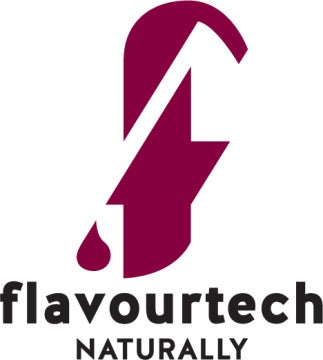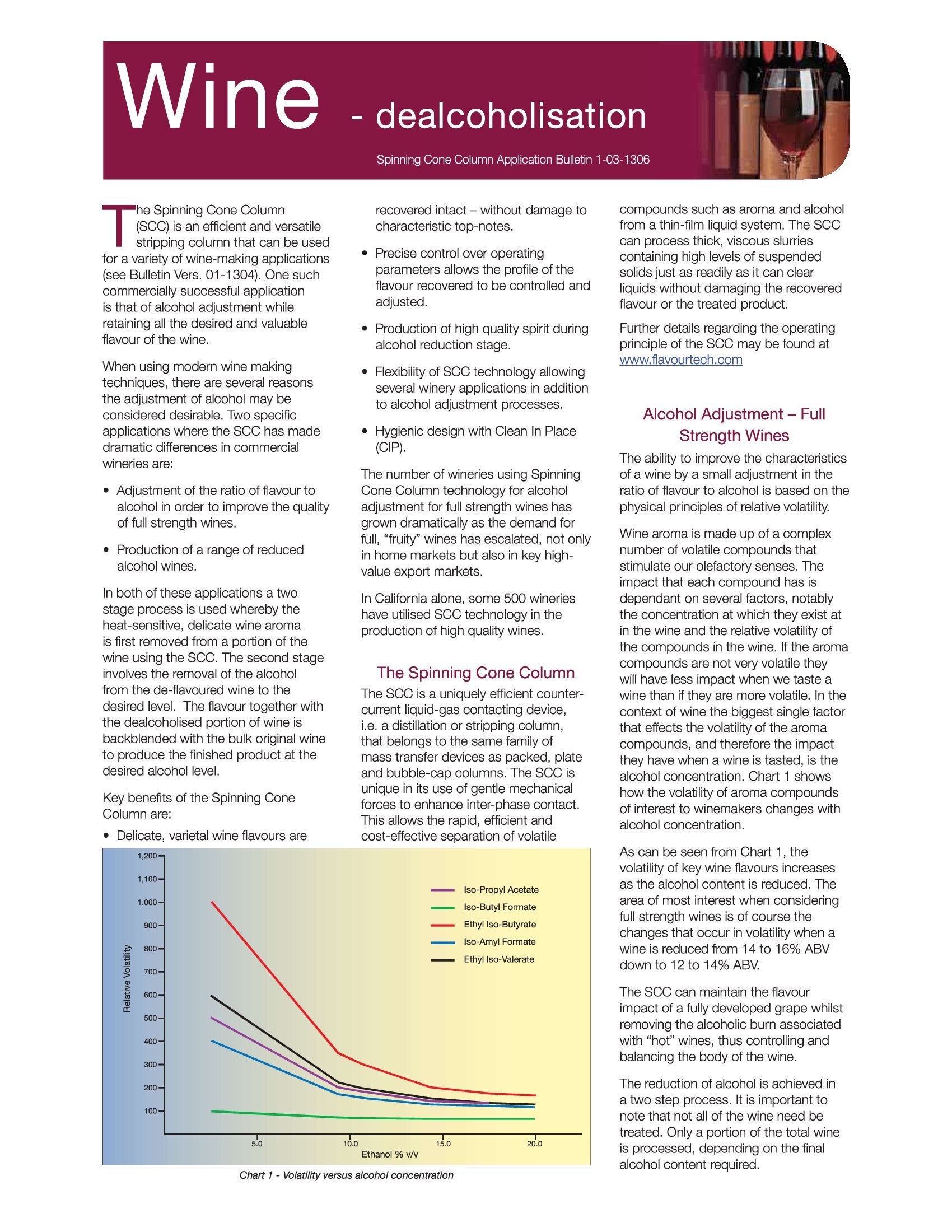
The market for low alcohol (<0.5%v/v) and alcohol free (<0.05%v/v) wine products is continuing to grow in many countries around the world with demand driven by the introduction of stricter drink-driving laws, health concerns and religious and cultural attitudes. As the market develops, this product space is becoming increasingly competitive, which is placing pressure on wineries to produce higher quality products. Flavourtech’s Spinning Cone Column and Resin Adsorption Column are the tools that enable these high-quality targets to be achieved.
Why is it so important to maintain and keep safe, the original wine or beer aroma? Winemakers and Brewmasters take the time and effort to produce the highest quality alcoholic product so that the flavours are enjoyed by the consumers. They win awards and are recognised for their achievements, so when they are asked to produce a low or zero alcohol product (that is, remove the alcohol from their award winning product), in the past they have opted for the lowest quality wine or beer as the starting material.
But with the increased popularity of and demand for better flavoured dealcoholised beverages, these Winemakers and Brewmasters are providing higher quality wines or beers in the aim of carrying forward these award-winning flavours to the end product. In other words, great product in, great product out.
But there is something in between they must consider, an extremely important part – what system should they use to remove the alcohol?
Dealcoholisation in the Wine and Beer Making Process
There are a few techniques available for removing alcohol from wine or beer. These techniques include membrane systems, partial vacuum evaporation and (vacuum steam) distillation, with the latter being widely considered the gentler and more efficient process. However, not all distillation technologies are created equal.
For example, Flavourtech’s SCC uses vacuum steam distillation with its key attribute being the ability to maintain the original flavour of the wine or beer. Operating temperatures of 30-45oC and residence times of less than 30 seconds result in the preservation of both the wine’s delicate aroma and colour.
Other distillation technologies, such as packed columns, use higher operating temperatures of approximately 65°C and residence times of minutes, rather than seconds. These higher temperatures and longer residence times can result in damage to the wine’s original aroma and a lower quality dealcoholised product (see further information in Table 1).
Table 1. SCC vs. packed column distillation systems

The table above compares the SCC to other packed column distillation systems. Winemakers and beer brewers around the world can see the benefits of their product being run through the SCC as it does produce a high quality dealcoholised product whether it is for alcohol adjustment, low or no alcohol final product.
Flavourtech’s New Resin Adsorption Column (RAC)
If the requirement is for a no alcohol ‘wine product’ (<0.05%v/v) then the options include only adding part of the recovered aroma back to the dealcoholized product or using Flavourtech’s new RAC technology. This new technology, in conjunction with the SCC, allows the total volume of the original wine’s aroma to be incorporated into the final product while still achieving the <0.05%v/v target.
The RAC process results in a premium zero alcohol wine or beer product (<0.05%abv) without the need to add any external flavours.
There have been many comments and questions about this process, which have caused me to put together the myth busting list below:
- The product (wine or beer) is superheated or is exposed to high temperatures in the SCC. Myth! The SCC temperature is maintained at 30 – 45°C under vacuum conditions. The SCC utilises steam as the stripping medium to “strip” out the aroma and alcohol, but with vacuum conditions, the steam temperature is also reduced to these temperatures.
- The dealcoholised wine is damaged or affected by temperature. Myth! The process through the SCC is the gentlest of the distillation techniques with the shortest heat-contact time (of less than 30 seconds) and lowest operating temperatures.
- The wine or beer contacts air in the system causing oxidation or degradation. Myth! As mentioned above, the column is under vacuum and so there is no air in the system. For wine and especially beer we can or do use clean water (such as treated through reverse osmosis or deoxygenated) as the stripping steam.
- The dealcoholisation through the SCC does produce losses of alcohol and water (wine water). Myth! The aqueous alcohol distillate from the product during the dealcoholisation step is captured. This can then be further rectified through the SCC for separation to 70 – 80% v/v alcohol and water. These two fractions can then be utilisedin other parts of the manufacturing process.
So, if you are a Winemaker or Brewmaster and are looking at a dealcoholised wine or beer what should you do to select the right process? Like any major decision, do some research, ask questions and talk with others in the industry who are in the same situation or have been so in the past. If you really want to see your own product processed then Flavourtech has pilot plants available for dealcoholisation and welcomes the opportunity to demonstrate them to you.
For more information on the Spinning Cone Column and Resin Adsorption Column please visit https://flavourtech.com/



